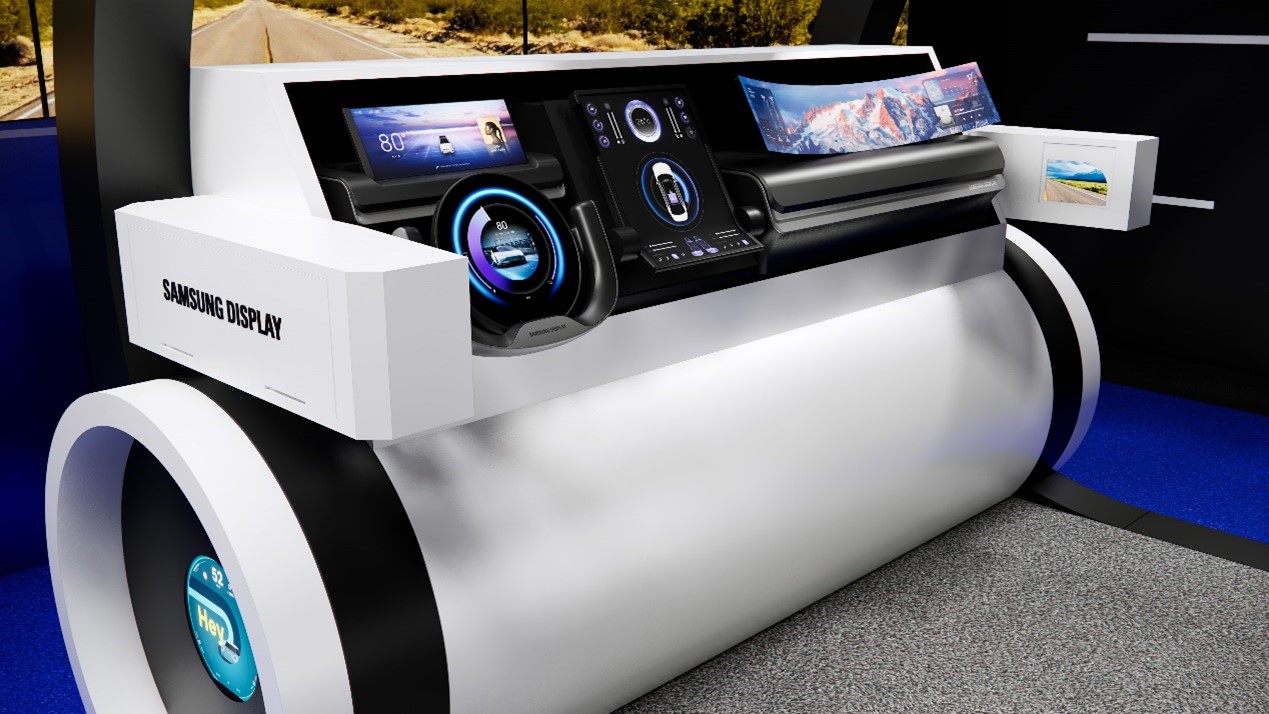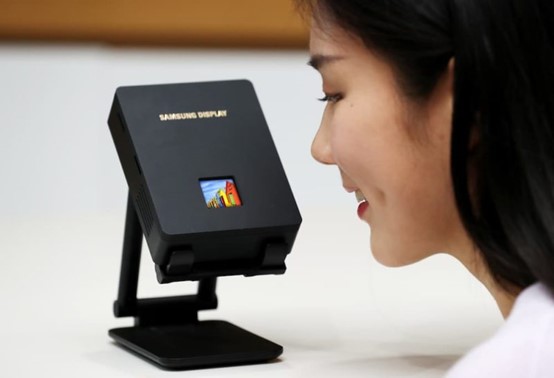News Center
Newss
The world's first transparent miniature LED display
Samsung showed its first transparent display that was powered by Micro LED for the first time.Compared with the OLED and LCD models, the Micro LED panel is much brighter and uses a frameless design. The audience can easily watch it through it.This crystal clear display is expected to completely change the visual experience by making the content more vivid and immersive.

Samsung's first transparent miniature LED display (picture source: Massimo)
In addition, the display is very thin, only about 1 cm.Due to high pixel density, the images presented are very clear.Because Micro LED is better than other display technologies in terms of brightness, Micro LED displays are unlikely to be affected by ambient light compared with the transparent OLED model.The company even adds a image layer behind the transparent screen to achieve three -dimensional effects, which aims to shape the future into part of the life of "artificial intelligence".
The company did not disclose any details of its cost and when to enter the retail market.
Leading foldable technology
At the consumer electronics exhibition in 2024, the Samsung display emphasized the use of advanced foldable technology in various scenarios of smartphones.
The company shows Flex in & Out ™ Flip, a foldable prototype that can fold at 360 degrees.Unlike the existing folding design, the design needs to install the second panel outside the device for users to check the information in the folding mode. Flex in & Out ™ FLIP only needs a display to view the information to make the device lighter and thinner.It is worth noting that the device is compatible with various devices including smartphones and tablets.The Flex product line is also equipped with lightweight Flexible Limple, which has attracted widespread attention from the media and visitors.The display emphasizes a light and easy -to -access design, allowing users to view time, payment and recovery chat information in the folding mode.

The folding technology displayed by the exhibition room, including the Flex series (picture source: Samsung Display))
RolLABLE FLEXTM is a special screen that can be extended to five times the original size when it is expanded to simulate the action of the scroll, and Flex Hybrid combines foldable and sliding technology.The latter allows users to not only fold the device easily, but also expand the display size by sliding.
OLED display for car interior: optimized spatial utilization rate
Since the automotive market is considered to be the most promising field of panel applications, Samsung Display has launched Flex Note Extendable ™ for the first time. It combines foldable and sliding technologies specifically used in the vehicle.When the display is completely folded, the size is 11 inches.When one side extends, it will extend to 13.8 inches (vertical ratio = 10: 9). When the other side is pulled out, its size will increase to 17.3 inches (length ratio = 4: 3).With flexible size adjustment, it can be used as a laptop in the car or watching a movie expansion display.
In addition, monitors based on this technology can be hidden in different parts of the car when needed.For example, the company shows a foldable tablet, which can be placed in the front pillow of the front row, and can lift the video content, which reflects the flexibility and convenience of future design design.

OLED display designed for car interior (picture source: Samsung Display)
OLED products for the IT industry: diversified and intelligent design
With the transformation of LCD to OLED, Samsung Display showed its OLED strength at the 2024 consumer electronics exhibition.
The Samsung display also shows the ultra -thin OLED panel with a thickness of only 0.6 mm, similar to a business card, which is only one -third of the ordinary LCD panel.Technically, this display manufacturer has achieved such a thin design (weight reduction by more than 60%) by removing a glass board from the conventional OLED structure, and in most cases, this requires two glass boards.In addition, the company applied 100%oxides TFT substrates to reduce the refresh rate to 1 Hz, which saves costs significantly.

Ultra -thin OLED panel (left) and 3 -meter -high mother glass (picture source: Samsung display)
The third-generation QD-OLED technology
Only one year after the release of the second-generation QD-OLED, Samsung Display announced the third-generation version this year, showing the use of advanced panel driver technology and artificial intelligence (AI).The use of the AI algorithm (quantum enhancer) and accurate micro -spraying process has improved the manufacturing process.The company hopes to bring three things to users through QD-OLED: greater brightness (> 3000 Nit), higher durability (that is, longer life) and better image clarity (higher PPIThe refresh rate).The third -generation technology has significantly increased the brightness of each RGB chip, which is about 50%higher than last year's model.
Regarding display applications, the 31.5-inch QD-OLED display exhibited has a pixel density of 140 PPI, which is equivalent to the image quality of the 65-inch 8K TV, and the refresh rate is as high as 240Hz.Alternatively, the 27 -inch panel has an impressive 360Hz refresh rate, which is the highest among production models.These displays are not only used for entertainment purposes (such as games), but also very suitable for professional uses such as video production and medical care applications.
The latest OLED TV series debuted during the event.The flagship S959D is powered by the QD OLED panel, which is 20%brighter than the previous generation.Anti -glare TV is equipped with optimized low reflection coating, which reduces glare while keeping the image definition.

S95D has no glare, has a higher brightness, while maintaining image definition (Picture Source: Samsung Display)
XR technology with miniature OLED as the core
During the event, Samsung Display launched a Micro OLED display tailor -made for extended reality (XR) market.For example, the company launched an RGB display, based on the use of organic materials on the silicon wafer, with ultra -high -definition and μm pixel density.The RGB OLED process allows red, green, and blue diode to deposit red, green, and blue diode without using a secondary light source, thereby achieving high resolution.Although the size is small, Micro OLED, which is only 1.03 inches in terms of image reproduction capabilities, is comparable to 4K TVs.

Samsung's Micro OLED display tailored for XR headphones (picture source: Samsung display)
After being acquired by the Samsung display in October last year, Emagin showed its Micro OLED application on various devices in the special XR exhibition space, such as the military helmet and a night vision mirror.
Source: Samsung Display News Office